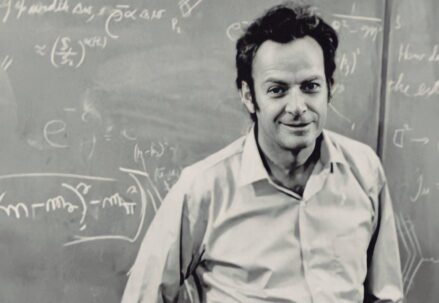Black holes, the cosmic enigmas of the universe, were first theoretically predicted by Einstein’s general theory of relativity. These fascinating objects, capable of warping space-time and trapping light, have intrigued astronomers and physicists alike for over a century. The recent imaging of the M87 galaxy’s black hole has significantly amplified interest in these massive entities. This exploration into the universe’s most massive black holes illuminates our understanding of these mysterious astronomical phenomena.
Understanding the Concept of Solar Masses
The concept of solar masses is integral to astrophysics, particularly in measuring the colossal size of black holes. One solar mass, equivalent to about 2 x 10^30 kilograms, is the standard unit for comparing the mass of celestial objects to that of our Sun. It offers a comprehensible scale to grasp the sheer size of black holes, whose masses can dwarf that of the Sun by billions of times. This unit underscores the immense gravitational pull and density that characterize these astronomical giants.
Top Five Most Massive Black Holes Discovered
The discovery of the five most massive black holes in the universe marks a significant achievement in astrophysics. These discoveries not only showcase the advancements in astronomical technology and methods but also provide a window into the behaviors and characteristics of such massive celestial bodies. Each black hole, with its unique features and location in the cosmos, adds a new dimension to our understanding of the universe’s structure and the fundamental forces at play.
Comparative Analysis of Gigantic Black Holes
| Rank | Black Hole | Mass (in Solar Masses) | Location | Significance |
|---|---|---|---|---|
| 5. | NGC 6166 | 30 billion | Abell cluster, Hercules constellation | Notable for its active nucleus and X-ray luminosity |
| 4. | H1821+643 | Over 30 billion | Draco constellation | Known for its massive size and quasar properties |
| 3. | S5 0014+81 | 40 billion | 12.1 billion light-years away | Distinguished as one of the most luminous quasars |
| 2. | IC 1101 | 40-100 billion | Super-giant elliptical galaxy | Largest known galaxy with an ultramassive black hole |
| 1. | TON 618 | 66 billion | Canes Venatici constellation | Holds the record for the most massive black hole |
The Mystique of NGC 6166
NGC 6166, an elliptical galaxy residing in the Abell cluster, is renowned for housing a supermassive black hole of 30 billion solar masses. This galaxy, located about 490 million light-years away in the Hercules constellation, is a compelling subject for astrophysicists due to its bright X-ray emissions and active galactic nucleus. The black hole at its center is responsible for powering vast radio jets, making NGC 6166 a significant study in understanding galactic dynamics and black hole activity.
The Enigma of H1821+643
H1821+643 stands out as a quasar harboring a supergiant black hole, initially thought to be the universe’s most massive. Located over 10.4 billion light-years away in the Draco constellation, this quasar’s black hole is more than 30 billion solar masses. Its sheer size and luminosity make it a crucial subject in the study of quasar properties and the behavior of massive black holes in distant galaxies.
The Astonishing S5 0014+81
S5 0014+81 is a notable blazar, one of the most luminous and energetic quasar subclasses, hosting a black hole with approximately 40 billion solar masses. Located 12.1 billion light-years away, this quasar stands as one of the most powerful objects in the observable universe. Its immense luminosity and significant mass offer invaluable insights into the nature of blazars and the extreme conditions surrounding such massive black holes.
Exploring IC 1101’s Central Black Hole
IC 1101, the largest known galaxy in the universe, is home to an ultramassive black hole, with estimates ranging between 40 and 100 billion solar masses. This super-giant elliptical galaxy, characterized by its low star formation rate and bright radio emissions, provides a unique perspective on the relationship between galaxies and the supermassive black holes at their centers.
The Unprecedented Scale of TON 618
TON 618, a hyperluminous quasar, tops the list of the most massive black holes known, with an astonishing mass of 66 billion solar masses. Located near the North Galactic Pole in the constellation Canes Venatici, TON 618 shines with the luminosity of 140 trillion Suns. Its size and brightness make it one of the most extraordinary objects in the known universe, offering a glimpse into the extreme nature of black holes.
Profiles of Key Astrophysicists Behind Black Hole Discoveries
The discovery and study of these massive black holes owe much to the work of dedicated astrophysicists. Pioneers like Stephen Hawking, who theorized about black hole radiation, and Kip Thorne, known for his contributions to gravitational wave research, have significantly advanced our understanding of these cosmic phenomena. Their relentless pursuit of knowledge in the realm of astrophysics has shed light on some of the most profound mysteries of the universe.
Video Guide
To answer all your questions, we have prepared a video for you. Enjoy watching it!
Conclusion
The discovery of these colossal black holes underscores the vastness and complexity of our universe. Each black hole, with its unique characteristics and location, contributes to the tapestry of cosmic knowledge, challenging our understanding of physics and the nature of the universe. As we continue to explore these gigantic entities, we deepen our comprehension of the cosmos and our place within it.





